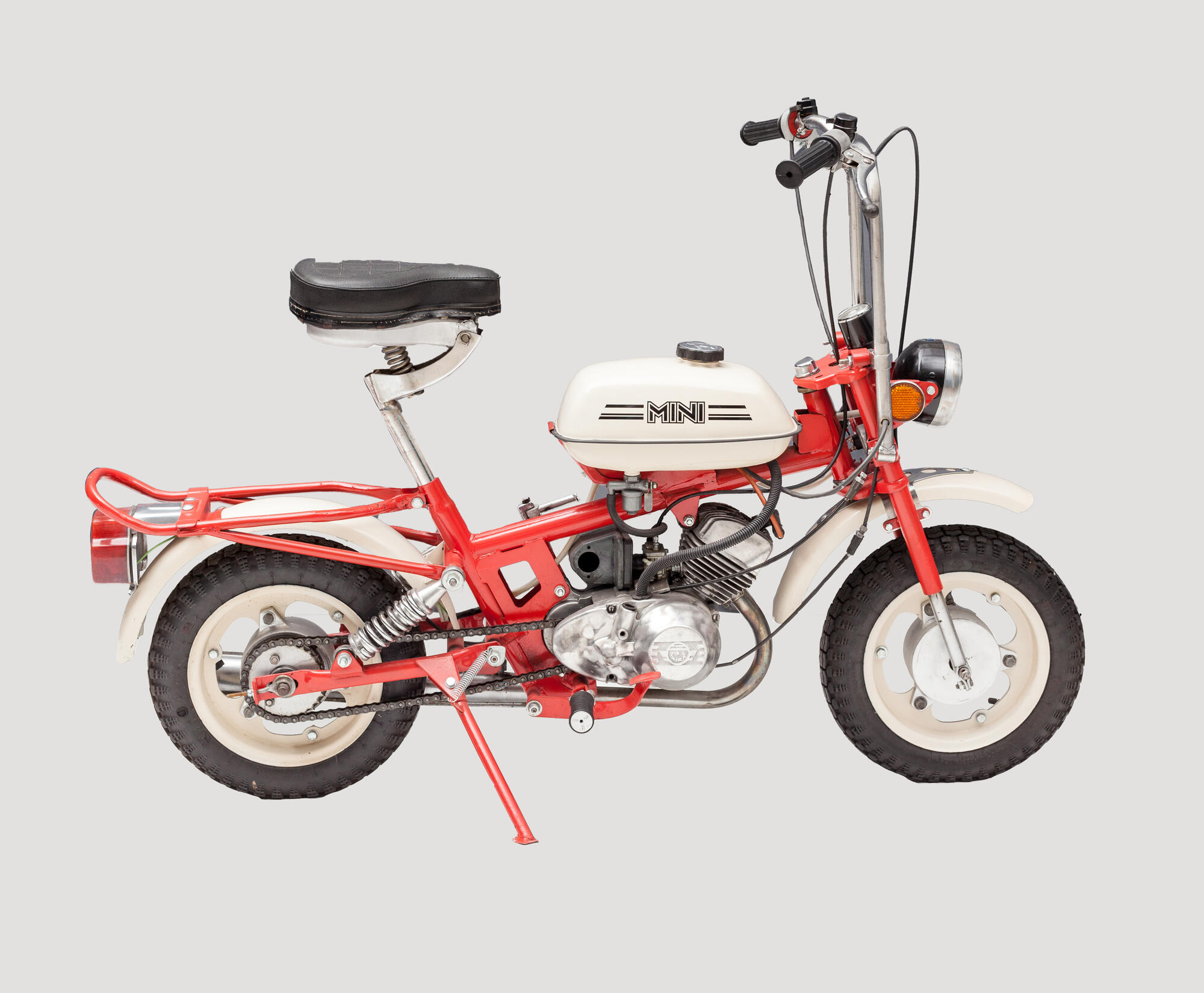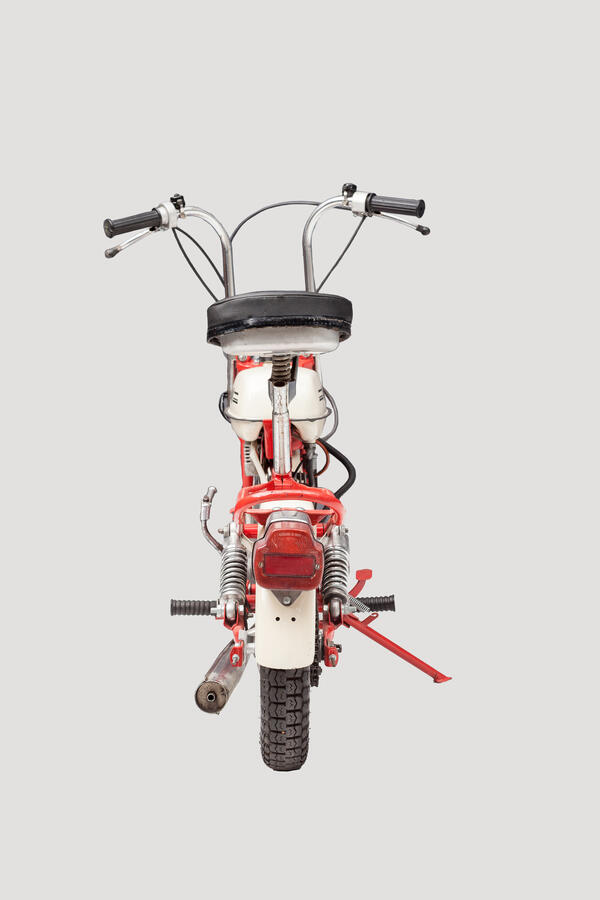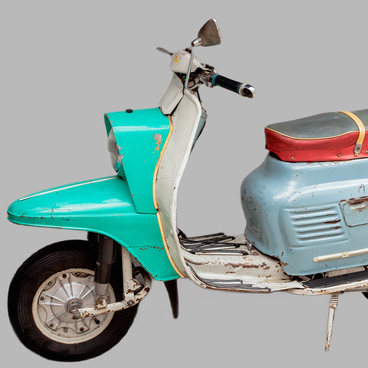In 1982, the Sarkanā Zvaigzne Factory presented an unusual moped known as the Riga-26 (or the Mini RMZ-2.126). It became the smallest machine in the factory’s history and could fit not only on an apartment balcony but also in the trunk of any Soviet car of the station wagon type. Moreover, the moped weighed only 50 kg.
The Riga-26 moped had small scooter-type wheels and a handlebar and saddle that could be lowered to save even more storage space. The moped could be fitted with various engines, including the Sh-62, V-50, and V-501, all of which were produced in Lithuania.
The main engineering solution that helped to reduce the moped’s size was the introduction of 10-inch wheels instead of larger spoked wheels. They had Mini rims like the Tula and Vyatka motorcycles, which could be split into two to replace the tires.
According to the design specification, the Riga-26 with a folded handlebar and saddle was supposed to fit vertically into a standard elevator cabin, a closet in a tiny “Khrushchev-era” apartment, or a small area in an outdoor utility shed. Moreover, the mini bike had to fit easily into the Volga GAZ-24 trunk so that, if necessary, it could be transported by a taxi. The Mini moped could also potentially be placed on the roof rack of the Zhiguli, Moskvitch, and Zaporozhets cars.
The designers equipped the moped with an anti-theft system: the front fork and frame had loops that could be joined together by turning the handlebar full-lock and fixed with a padlock. When parked, the Mini was supported by a kickstand.
The Riga-26 had only two modifications: standard and deluxe. The latter had a trunk above the rear fender, a folding luggage rack in front, and additional turn signals.
In 1985, this model was replaced by the Mini RMZ-2.130. Mostly preserving the features of this model, it also had a pendulum rear suspension instead of the rigid mounting to the frame, and a new exhaust system that prevented the muffler from catching on the uneven road surface.
The Riga-26 moped had small scooter-type wheels and a handlebar and saddle that could be lowered to save even more storage space. The moped could be fitted with various engines, including the Sh-62, V-50, and V-501, all of which were produced in Lithuania.
The main engineering solution that helped to reduce the moped’s size was the introduction of 10-inch wheels instead of larger spoked wheels. They had Mini rims like the Tula and Vyatka motorcycles, which could be split into two to replace the tires.
According to the design specification, the Riga-26 with a folded handlebar and saddle was supposed to fit vertically into a standard elevator cabin, a closet in a tiny “Khrushchev-era” apartment, or a small area in an outdoor utility shed. Moreover, the mini bike had to fit easily into the Volga GAZ-24 trunk so that, if necessary, it could be transported by a taxi. The Mini moped could also potentially be placed on the roof rack of the Zhiguli, Moskvitch, and Zaporozhets cars.
The designers equipped the moped with an anti-theft system: the front fork and frame had loops that could be joined together by turning the handlebar full-lock and fixed with a padlock. When parked, the Mini was supported by a kickstand.
The Riga-26 had only two modifications: standard and deluxe. The latter had a trunk above the rear fender, a folding luggage rack in front, and additional turn signals.
In 1985, this model was replaced by the Mini RMZ-2.130. Mostly preserving the features of this model, it also had a pendulum rear suspension instead of the rigid mounting to the frame, and a new exhaust system that prevented the muffler from catching on the uneven road surface.




